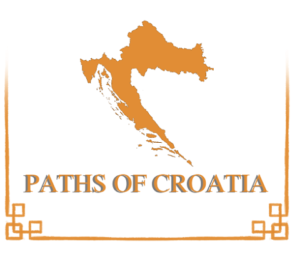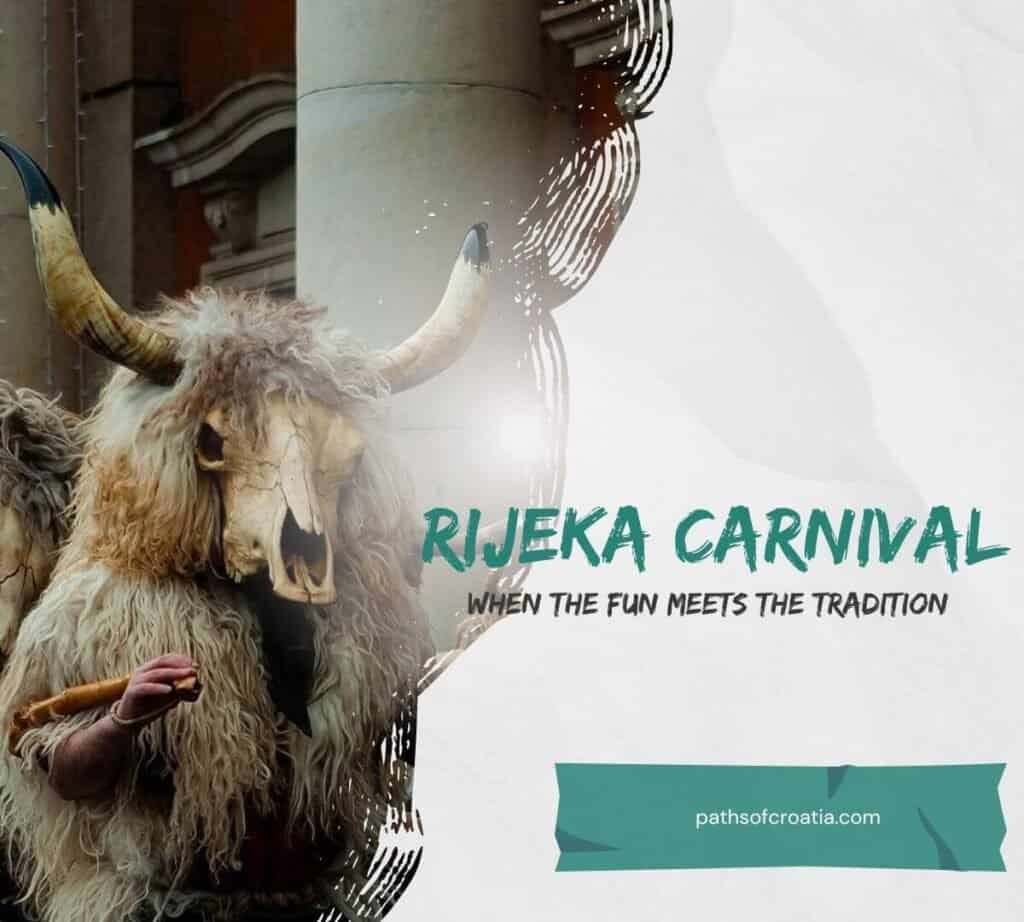
When it comes to vibrant and lively carnivals, the Rijeka Carnival in Croatia is a must-visit event.
In 1995 it was rated as one of the top 500 European events and rated as one of the most exotic events in the world by Sunday Times.
Known as one of the largest and most colorful carnivals in Europe, this annual celebration brings together locals and tourists alike for a week of festivities, parades, and merrymaking in which everybody can let their imagination loose and become whoever they want to be!
Locals like to call the carnival time the 5th season, as during the period everybody lives and breathes carnival and forgets about their usual life.
Find accommodation in Rijeka and join the festivities between 17. January and 14. February 2024, with the main event on 11. February!
History of the Rijeka Carnival
The roots of the Rijeka Carnival can be traced back to medieval times when masked celebrations marked the transition from winter to spring. Over the centuries, the carnival evolved, blending elements of pagan rituals, Christian festivities, and local customs into a unique spectacle.
In 1449 the city leaders banned masks in an attempt to control the citizens who’d rebel behind the masks against the running parties. Yet, unsuccessfully and in the revolt, the roots of the carnival were born.

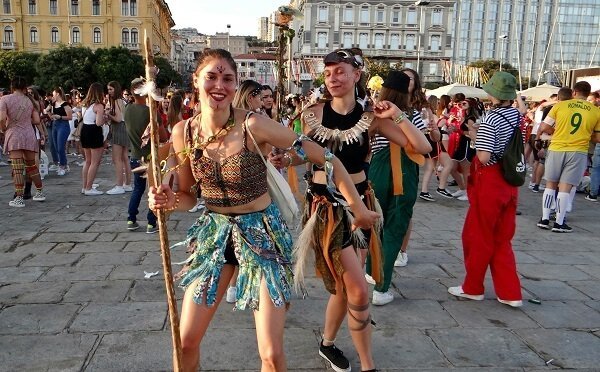
In 1982 for the first time in the city’s famous street Korzo, masked groups such as Pehinarski feštari and Halubajski zvončari walked and danced their way through, starting the annual tradition of the main carnival in the town.
Later, more groups joined, and today more than 100 masked groups with thousands of members stroll through Korzo, bringing joy and entertainment to visitors and loyal TV viewers who take broadcasting of the carnival as some type of annual ritual.
Traditions and Highlights
The Rijeka Carnival is known for its unique traditions and highlights that make it a truly unforgettable experience. One of the most anticipated moments of the carnival is the election of the Carnival Queen, and the burning of Pust, the type of mascot that embodies everything wrong and evil.
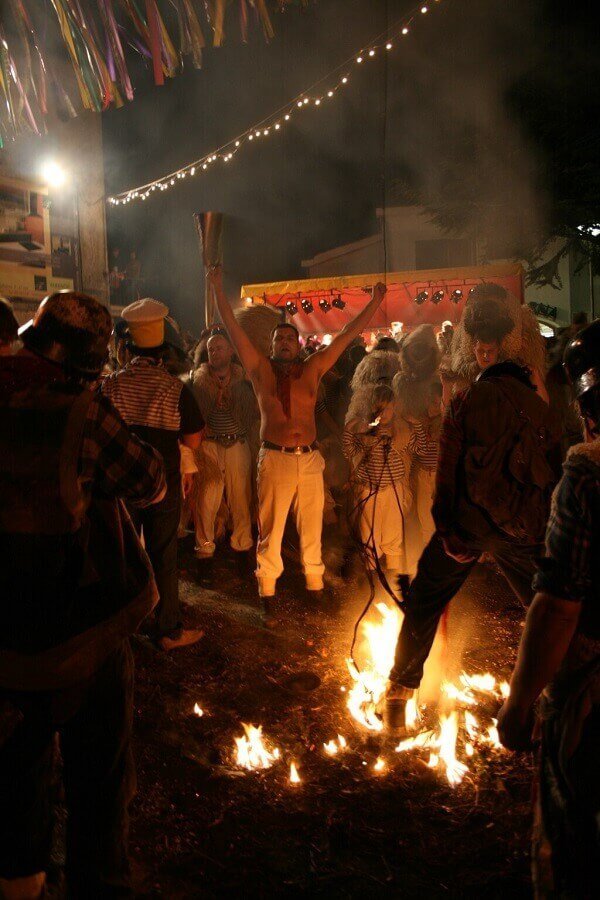
The parade is a riot of colors, music, and laughter which creates a joyful atmosphere that spreads throughout the city, but one of the unique aspects of the Rijeka Carnival is the “Pust” ritual which serves as the catharsis.
This symbolic act signifies the end of winter and the beginning of spring, marking a new beginning and a fresh start.
Zvončari
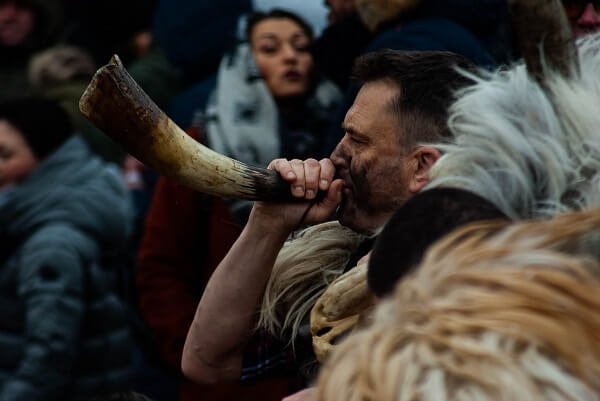
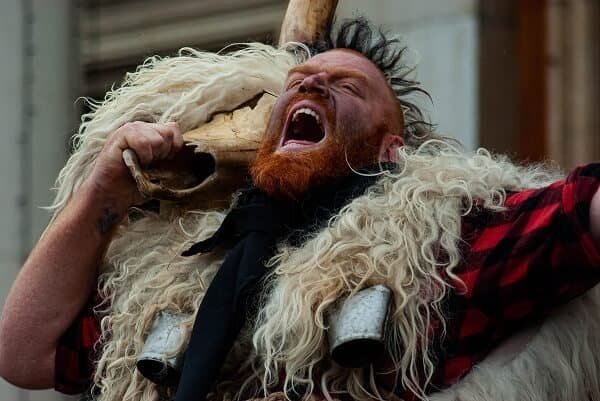
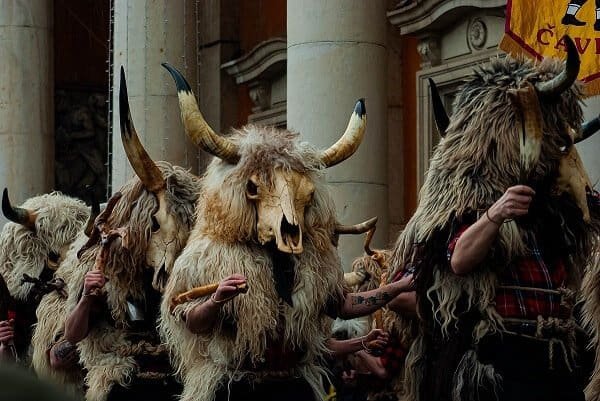
Vivian Krayslavova, CC BY-SA 4.0 httpscreativecommons.orglicensesby-sa4.0, via Wikimedia Commons
The Zvončari are traditional masked figures who wear sheepskin coats and large bells around their waists.
They symbolize the ancient tradition of chasing away evil spirits and welcoming the arrival of spring.
When we were kids, we feared when the Zvončari would take over our neighborhoods as they resemble something notorious straight out of the worst nightmares, but eventually, we’d get used to their benign nature.
It’s a true spectacle to see a bunch of men dancing dressed in sheepskins, with various masks made from real animal bones and large noisy bells.
The traditional attire became part of UNESCO’s roster of Intangible Cultural Heritage of Humanity in 2009.
This is why we celebrate
What sets the Rijeka Carnival apart from other carnivals is its strong sense of community spirit and inclusivity.
The carnival brings together people of all ages, backgrounds, and nationalities, fostering a sense of unity and togetherness.
Whether you’re a local or a visitor, you’re welcomed with open arms and encouraged to join in the festivities.
In 2024, on 11. February, the international carnival parade takes place in which the local groups together with people from other countries in the world will display what they prepared for months in advance!
The Rijeka Carnival is how we cherish what have, prepare for the year, and remember that despite hard times everybody needs to experience joy in their life!
Conclusion
The Rijeka Carnival is more than just a celebration, it’s a testament to the city’s rich history, vibrant traditions, and strong community spirit.
From the colorful parades to the lively street parties accompanied by music events and street food, this carnival offers a unique and unforgettable experience for everyone involved.
So, if you’re looking for a carnival that combines culture, tradition, and a whole lot of fun, make sure to put the Rijeka Carnival on your bucket list.
If you don’t have accommodation, we have reviewed the best places where you can stay in Rijeka from budget to luxury alternatives.
See ya!
FAQs
- Is the Rijeka Carnival suitable for families? Absolutely! The carnival offers a wide range of family-friendly events and activities, ensuring fun for all ages.
- Are tickets required to attend the Rijeka Carnival? Many events at the Rijeka Carnival including the main one which takes place on Korzo are free and open to the public, though some other individual parties may require admission tickets.
- What is the best time to visit the Rijeka Carnival? The carnival typically takes place in February or March, depending on the date of Easter. Check the official schedule for specific dates and events. In 2024. the Carnival takes place between 17. January and 14. February with the international carnival parade on 11. February.
- Can I participate in the Rijeka Carnival parade? Absolutely! The carnival welcomes participants from all over the world!
